
 |
|
|
Nursery & Forest
Volume 58 Number 9 Date 06/27/2013 POWDERY MILDEW - The perennials astilbe, evening primrose, monarda and phlox at nurseries in Milwaukee, Polk, Rock and Washington counties were infected with this common fungal disease. Powdery mildew is characterized and easily diagnosed on most plants by a grayish white powdery dusting on the upper leaves, which later causes foliage to turn yellow and senesce prematurely. Cultural practices that increase air circulation can reduce mildew development. OAK LEAF BLISTER - This common oak disorder, identifiable by blisters scattered over upper leaf surfaces and corresponding gray depressions on the lower surfaces, was observed on red oak in St. Croix County. The oak leaf blister fungus infects only expanding leaves in the spring, while mature leaves are not susceptible. Blisters turn from yellow to reddish brown with pale yellow margins, eventually becoming dull brown with age. Heavy infection degrades the appearance of trees, but rarely endangers tree health. In circumstances where prevention is important, a fungicide spray can be applied in early spring just before buds begin to swell. Fungicides applied after bud break are ineffective. WHITE PINE WEEVIL - Close inspection of spruce and pine trees for evidence of larval infestation, such as wilted leaders and brown, discolored needles on the top lateral growth is recommended at this time. This insect can be controlled by pruning the infested area 6-10 inches below the wilted leader before adults emerge in July. Pruned tops should be removed and disposed of away from fields to prevent reinfestation, as the adults will continue to emerge from cut leaders. BAGWORM - The distinctive cone-shaped "bags" of this insect were noted on arborvitae in Jefferson County, where eggs will soon be hatching. Bagworms attack both deciduous and evergreen trees, but needled evergreens such as arborvitae and juniper are favored. Larvae spread by wind or by crawling to nearby plants, as well as on infested nursery stock. Manual removal of the bags (which contain overwintering eggs) from fall through spring is the preferred control method for localized populations. For larger infestations, insecticides are most effective when the larvae are young. -- Liz Meils, DATCP Nursery Inspector PARROT FEATHER - Nursery inspectors found the invasive plant parrot feather (Myriophyllum aquaticum) for sale at retailers in Douglas and Pierce counties. This aquatic species invades shallow lakes, ponds, ditches, and river backwaters and is classified as "Prohibited" under the Wisconsin DNR Chapter NR 40 rule. With certain exceptions, the transport, possession, transfer and introduction of any Prohibited species is banned in Wisconsin. Accordingly, the parrot feather was removed from the sales floor and returned to the out-of-state supplier who was also notified of Wisconsin's NR 40 rule. It is important for nursery operators and brokers to become familiar with prohibited and restricted species because some may be available from out-of-state sources. Refer to the following website for a list of Chapter NR 40 invasive species: http://dnr.wi.gov/topic/invasives/classification.html . Additionally, summaries of quarantine regulations by state are available on the National Plant Board website under Laws and Regulations. DIESEL FUMES DAMAGE - The large, conspicuous areas of brownish, dead needles appearing on evergreens on a St. Croix County Christmas tree farm were diagnosed by the DATCP Northwest Region Nursery Inspector as diesel fume damage resulting from diesel fumes being exhausted in close proximity to the needles of evergreens. Symptoms can develop in just 1-2 minutes whenever diesel fumes from Bobcat tractors or other machinery used to dig and move evergreen stock from fields is emitted too close to the trees. Damaged needles may be trimmed out, but growers should be aware of the symptoms of and potential for damage by diesel machinery in Christmas tree fields. -- Konnie Jerabek, DATCP Nursery Inspector 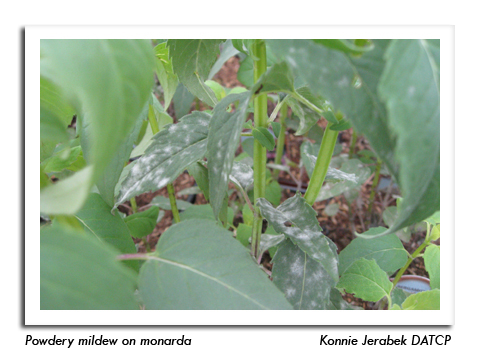
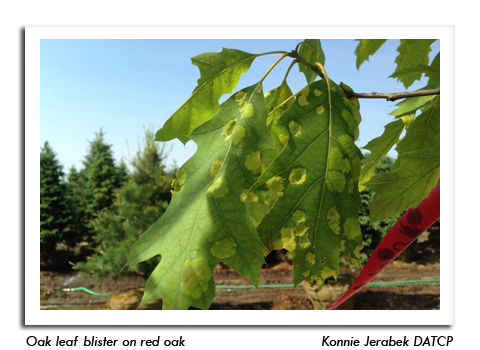
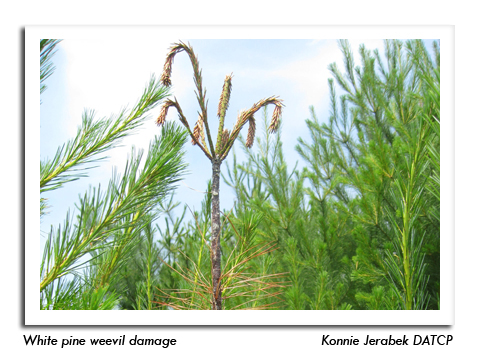
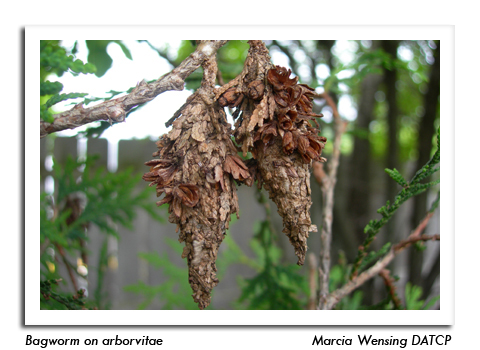
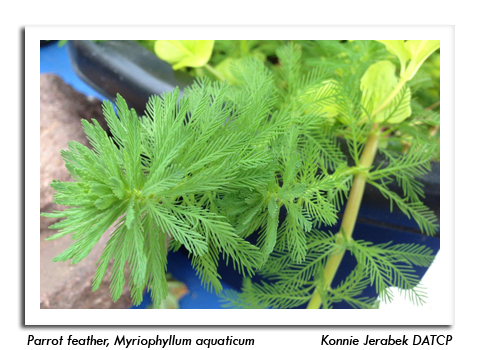
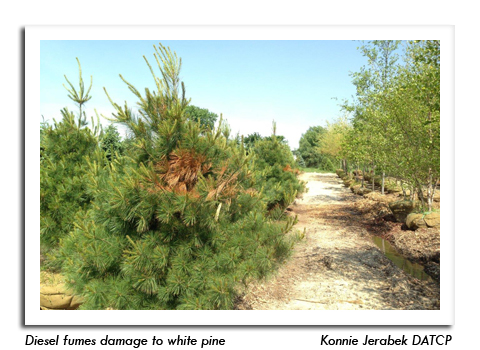
|
|
|